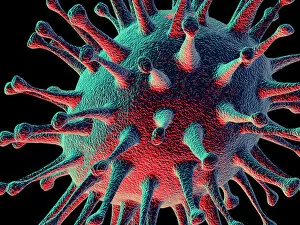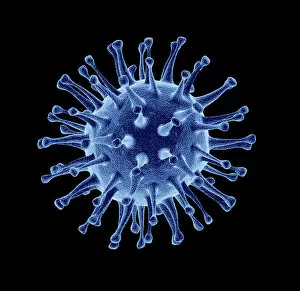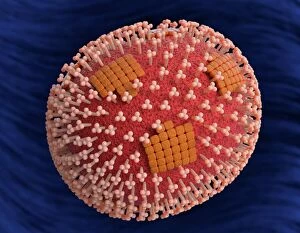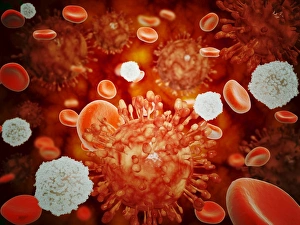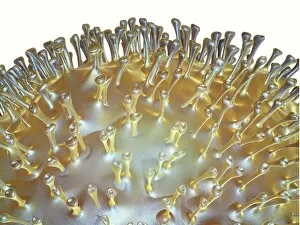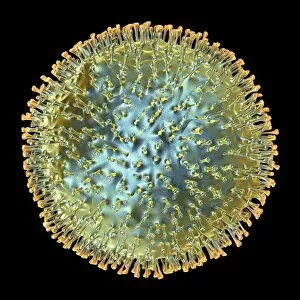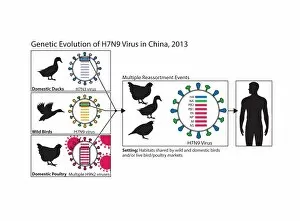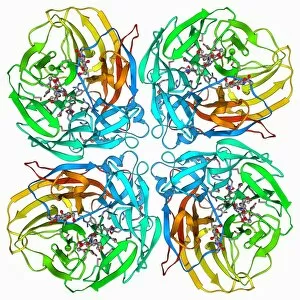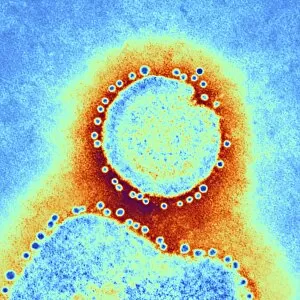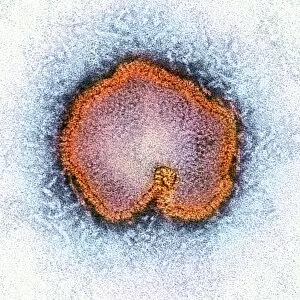Neuraminidase Collection
Neuraminidase, a crucial protein found in various flu viruses including the avian flu virus H5N1, plays a significant role in viral replication and transmission
All Professionally Made to Order for Quick Shipping
Neuraminidase, a crucial protein found in various flu viruses including the avian flu virus H5N1, plays a significant role in viral replication and transmission. Represented by intricate computer artwork or captured through powerful microscopic views, neuraminidase is an essential component of influenza virus particles. In one captivating image (F008 / 3245), we witness the detailed structure of a flu virus particle with its distinctive neuraminidase protein. This computer-generated representation (F008 / 3242) showcases the complexity and beauty of these tiny organisms that can cause widespread illness. In another fascinating depiction (TEM), we observe influenza virus particles under high magnification, revealing their unique shape and arrangement. The microscopic view also highlights the presence of red blood cells and white blood cells surrounding the H5N1 virus—a reminder of how this avian flu strain can affect our immune system. However, not all hope is lost when faced with such formidable foes. A striking visual portrays a black swarm of H5N1 avian flu viruses being attacked by antibodies—an inspiring testament to our body's defense mechanisms against these harmful pathogens. Artworks F008 / 3244, F008 / 3243, and F008 / 3241 further emphasize the diversity within flu virus particles while showcasing their surface proteins alongside antibodies—illustrating how research aims to understand these structures better for potential therapeutic interventions.

